Have you ever thought about transforming your passion into your profession? Well, that‘s exactly what Hannah Mansfield has done.
Hannah, better known as The Perpetual Maker, set up on her own as a full-time designer and maker, after falling in love with embroidery at university. Her specialism? Exquisite creative stitch that’s breaking the mould as much as creating perfection.
Since launching her career, Hannah has been on a journey of discovery, taking traditional techniques such as goldwork to new dimensions – and gaining recognition along the way.
She loves her life as a maker so much she decided to share her passion, and now teaches in person and online, as well as stocking her designs and kits on her website.
Hannah tells us why one of her most striking works is also her most personal, and how she aims to be a thoroughly modern maker, one that’s unafraid to take creative risks; all the while honing her craft.
What’s in a name?
TextileArtist.org: The Perpetual Maker is an intriguing name, how did it come about?
I always had a creative project on the go when I was growing up, and would work on them whenever I got the chance, even on holiday or while visiting relatives. I became known in my family for always making something.
When it came to my business, I wanted a name that conveyed that I’ve always made things, and always will and that creativity is integral to my life. I felt that the word ‘perpetual’ was a more interesting way to say forever – and followed by ‘maker’ it made the perfect description of me.
How did you discover embroidery?
Textiles and embroidery constantly featured in my list of projects. I started out by making kits and following other embroiderers’ designs. I decided to specialise in embroidery during university when I became more aware of organisations and companies such as Hand & Lock, The Royal School of Needlework and Lesage. I found their creations inspirational.
I was also intrigued by some of the more specialist embroidery techniques used by these ateliers, such as goldwork, tambour beading and monogramming, and I wanted to be able to use these techniques myself.
I love embroidery because it’s such a calming pursuit. Each stitch has to be considered. I like the control you have with it. It’s entirely up to you how you make each stitch, which means nothing is left to chance.
It’s also very hard to ruin an embroidery because you can always unpick your stitches which, when most embroideries take many hours of work, is very forgiving.
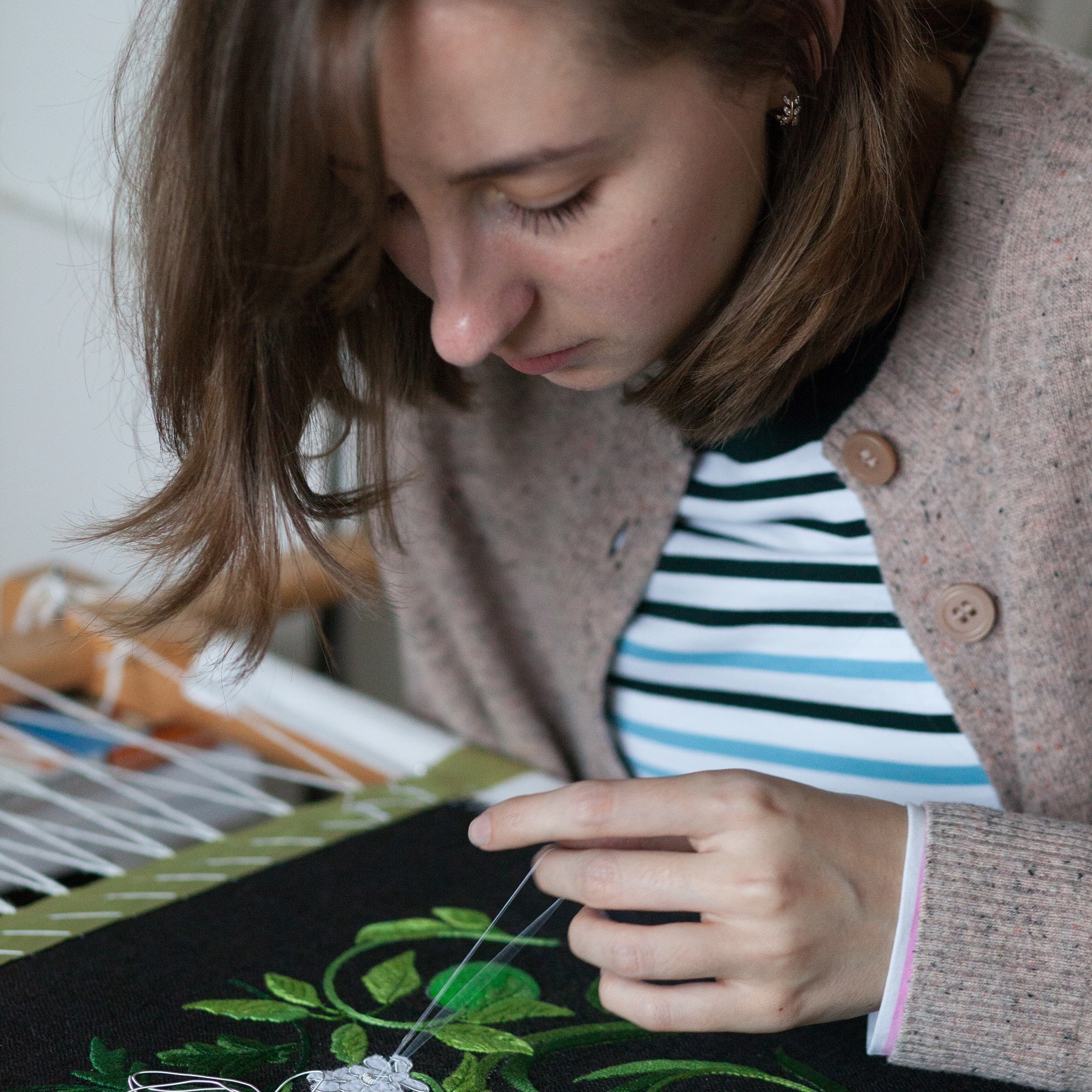
Tell us about the techniques you love?
The traditional embroidery techniques I use most are goldwork and tambour beading. I was inspired to learn goldwork after a studio tour of Hand & Lock. The visit included a talk on goldwork, and the technique really appealed to me because it felt so different to any other form of embroidery. I found the specialist threads and wires fascinating and loved the use of padding to create raised embroidery.
I learned tambour beading as a way to speed up applying beads and sequins, as I wanted to work more with these materials. It also interested me because it’s a technique frequently used in haute couture embroidery, and I wanted to be able to achieve this high standard of embroidery.
How did you set about learning them?
I took day classes in goldwork and tambour beading at Hand & Lock, The Royal School of Needlework, and with Lesley Coidan (a tambour embroiderer).
I also think I learned a lot from my creative exploits while growing up. Even though I was just embroidering fun projects, I got a lot of practice. This gave me a basis I could build on when it came to more advanced embroidery techniques.
Both tambour beading and goldwork really suit my style of embroidery. I’ve always been a very neat embroiderer, and both techniques require precision.
I enjoy using these techniques to create interesting textures and details within my embroidery. There’s a great variety of different goldwork wires, beads and sequins, and I love having this range of materials to make beautiful embroideries with.
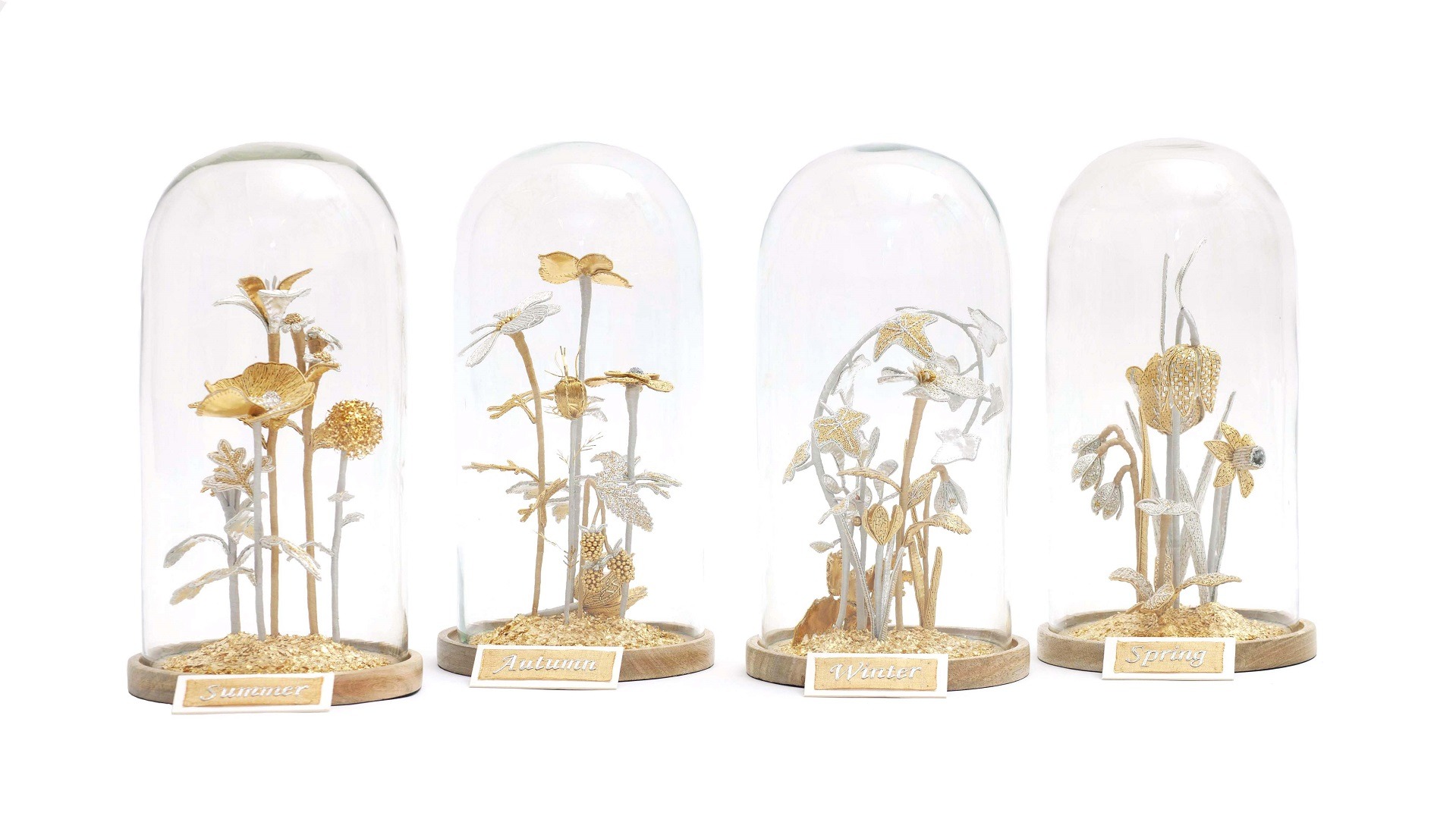
Back to nature
Are there any recurring themes in your work?
I often work to a theme, one of my favourites being the seasons of the year. For me, flowers and plants are so characteristic of each season, and I enjoy creating series of work based on flowers that feature in each.
I’ve also themed embroidery around flowers from a particular country, such as native British wildflowers or flora that’s characteristic of a country I love, such as Italy.
Embroidery takes much effort and many hours to create so I feel like it’s a fitting tribute to something as precious as nature.
I’m trying to highlight and celebrate the beauty of nature through my embroidery. For instance, when I feature wildflowers in my designs, I aim to draw attention to the value and beauty of these special plants, especially in the context of climate change.
What preparation and research do you do?
I always start with lots of drawing. If it’s a large or very detailed design, I’ll make a few small rough sketches to establish the layout. Then I’ll make some detailed studies of my subject matter. I scan and trace these drawings using Illustrator so that I have a digital copy. Finally, I combine these with other drawings to create the design.
I usually draw from my own photos of flowers and insects taken in my garden. I’m always on the lookout for interesting plants to feature in my work.
I find organic shapes in nature much more interesting to embroider, and I love the intricate details and subtle textures of petals, which are so exciting to interpret with embroidery. And there are also so many fascinating insects that are such brilliant shapes and colours.
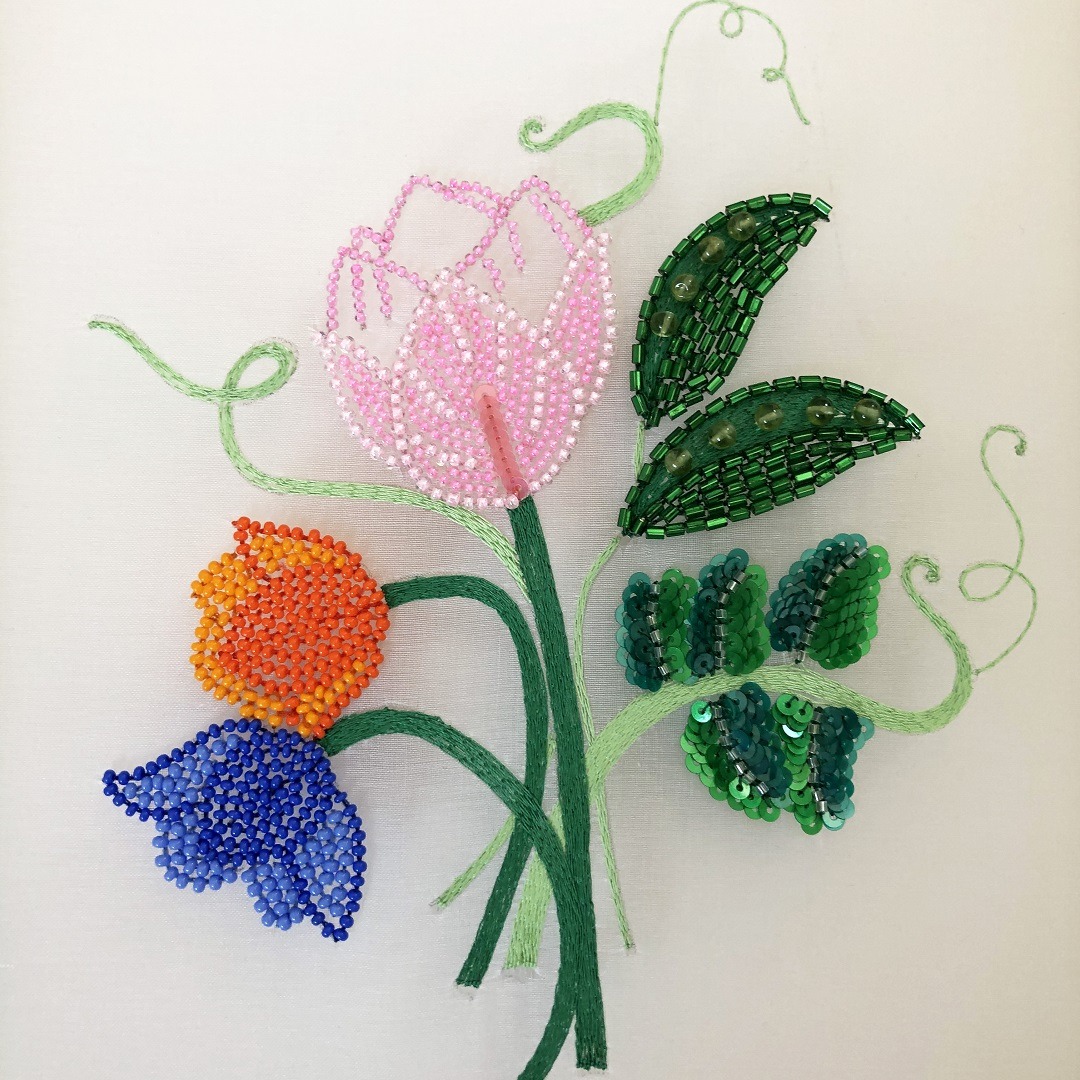
Can you tell us about some of your commissions?
At the moment I’m doing a lot of tambour beading but before this I worked on two commissions. The first was a cushion embroidered with the leaves of native British trees in pearl cotton thread. This is one of my favourite threads, due to the way it reflects the light beautifully when laid in different directions.
I used canvas work stitches to create interesting textures and patterns within each leaf. Canvas work is normally embroidered onto open weave fabric but for this project, I used an upholstery fabric, which meant I had to draw grids on the fabric to use as a guide.
The other commission was a hand embroidered bouquet for my sister’s wedding. It took me months to create and was made up of 3D flowers in goldwork embroidery, including anemones, cosmos and poppy flowers.
The process of making 3D flowers from goldwork involves many different stages, from making a flat embroidery of all the individual petals, to constructing them into flowers. It was embroidered with silver plated goldwork wires, and to match the wedding’s colour theme, I included details in shades of soft sage green. On the wedding day I added real eucalyptus foliage and tied it up with a hand embroidered ribbon.
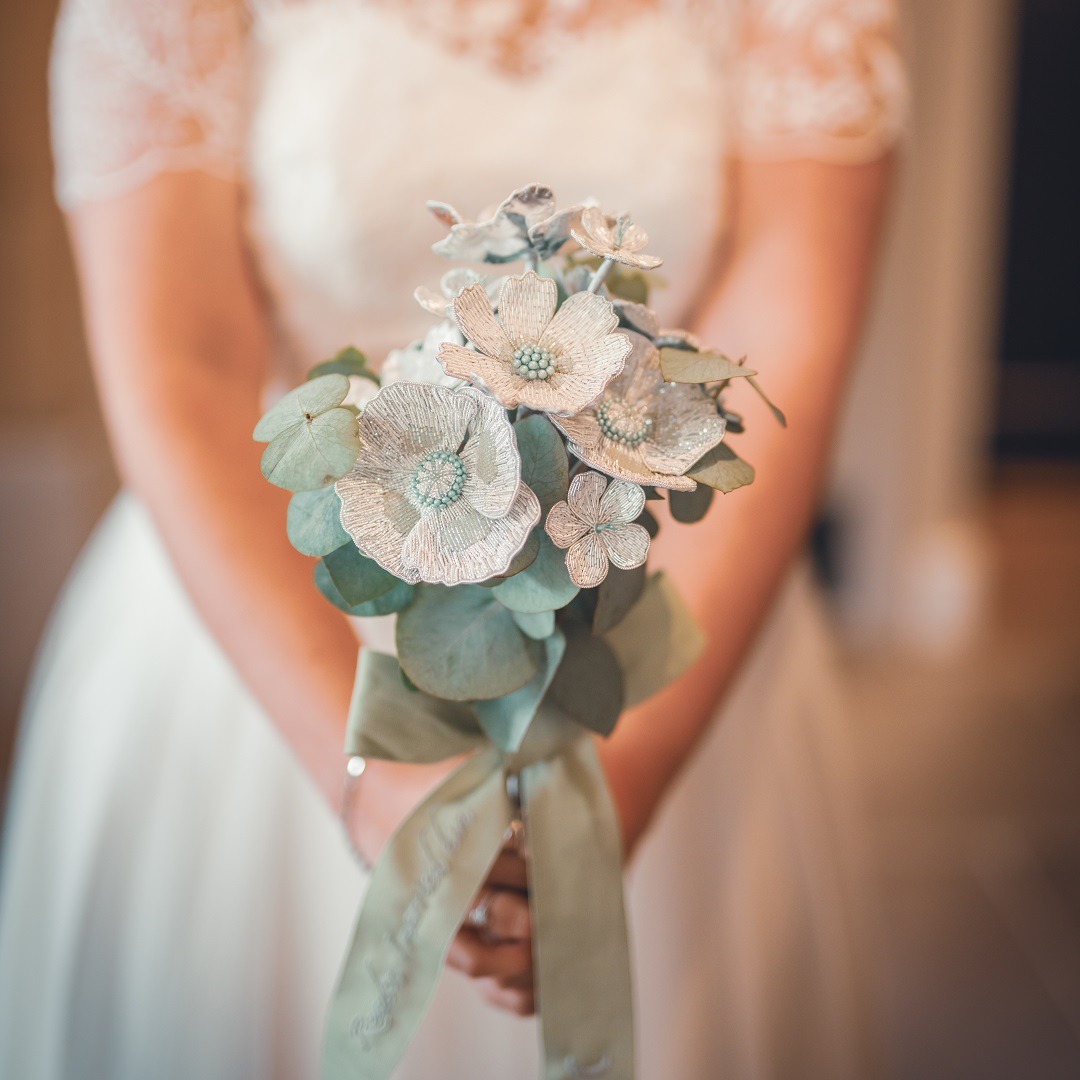
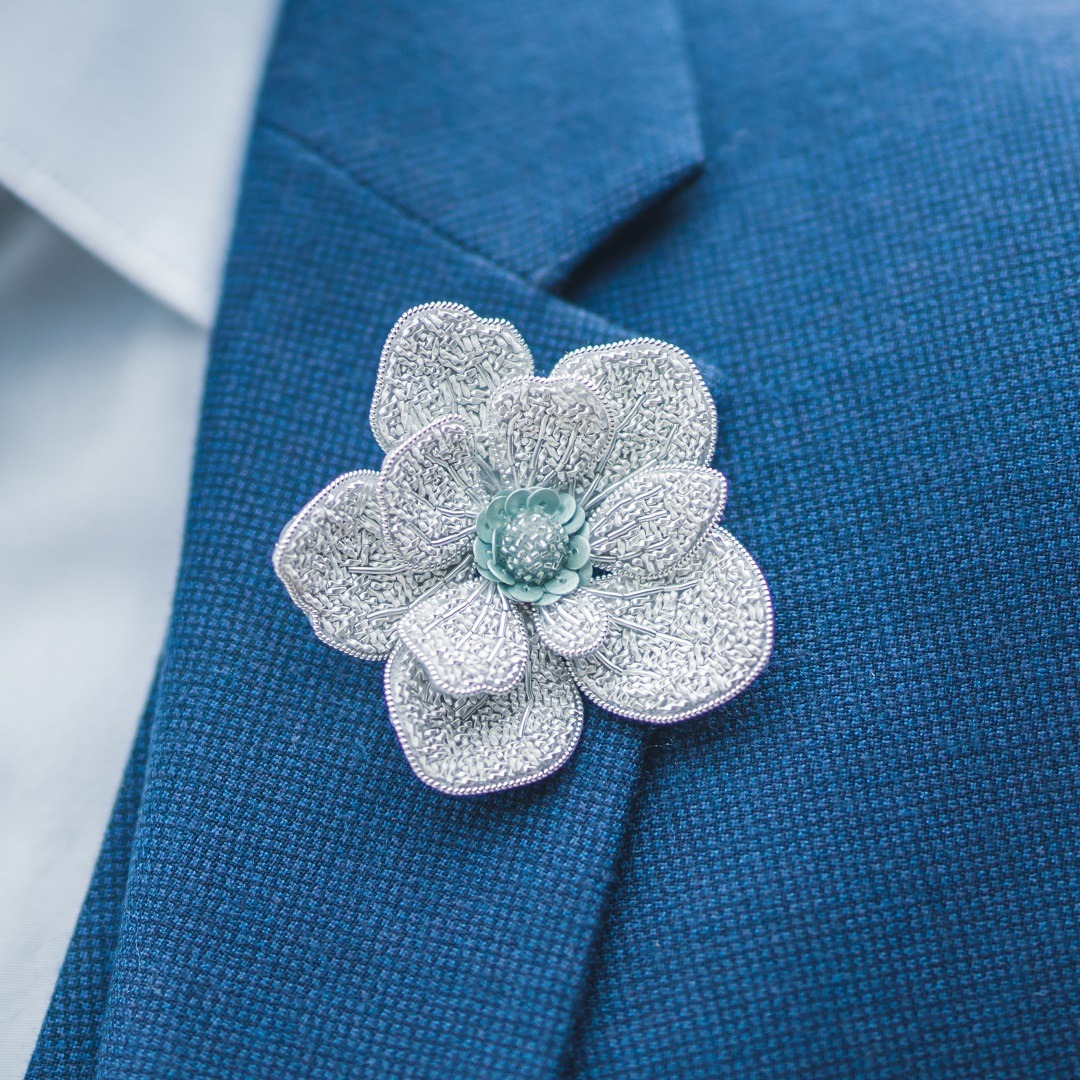
Inspired thinking
Where did the idea come from to work with goldwork in a more sculptural form?
Initially, it was an experiment. When I was newly self-employed I didn’t have a full work schedule so I had time to try out ideas. I wanted to create something striking and extravagant and to use goldwork in a really different way.
The idea was inspired by the Dutch Masters’ still life paintings and the work of the photographer Jamie Beck, who arranges and photographs beautiful floral arrangements. I wanted to create my own everlasting floral still life with embroidery.
In my work, I used goldwork wires to try to mimic the delicacy of flowers and portray the textures and patterns within their petals. Something quite important to making the flowers look organic is that I design the flowers so that each petal is a slightly different shape.
The idea of how to display the flowers was inspired by Victorian floral still life arrangements, which were placed under glass domes. The domes are also an attractive way to solve the problem of keeping the work dust-free and airtight to slow the process of the precious metals tarnishing. I use a brilliant company called Suffolk Glass, who will make bespoke glass domes to your specified dimensions, which means I have the freedom to make a floral sculpture to any size I like.
Since making my first experimental goldwork flower sculpture a few years ago, I’ve gradually been refining and improving the way I create the flowers with each piece I make.
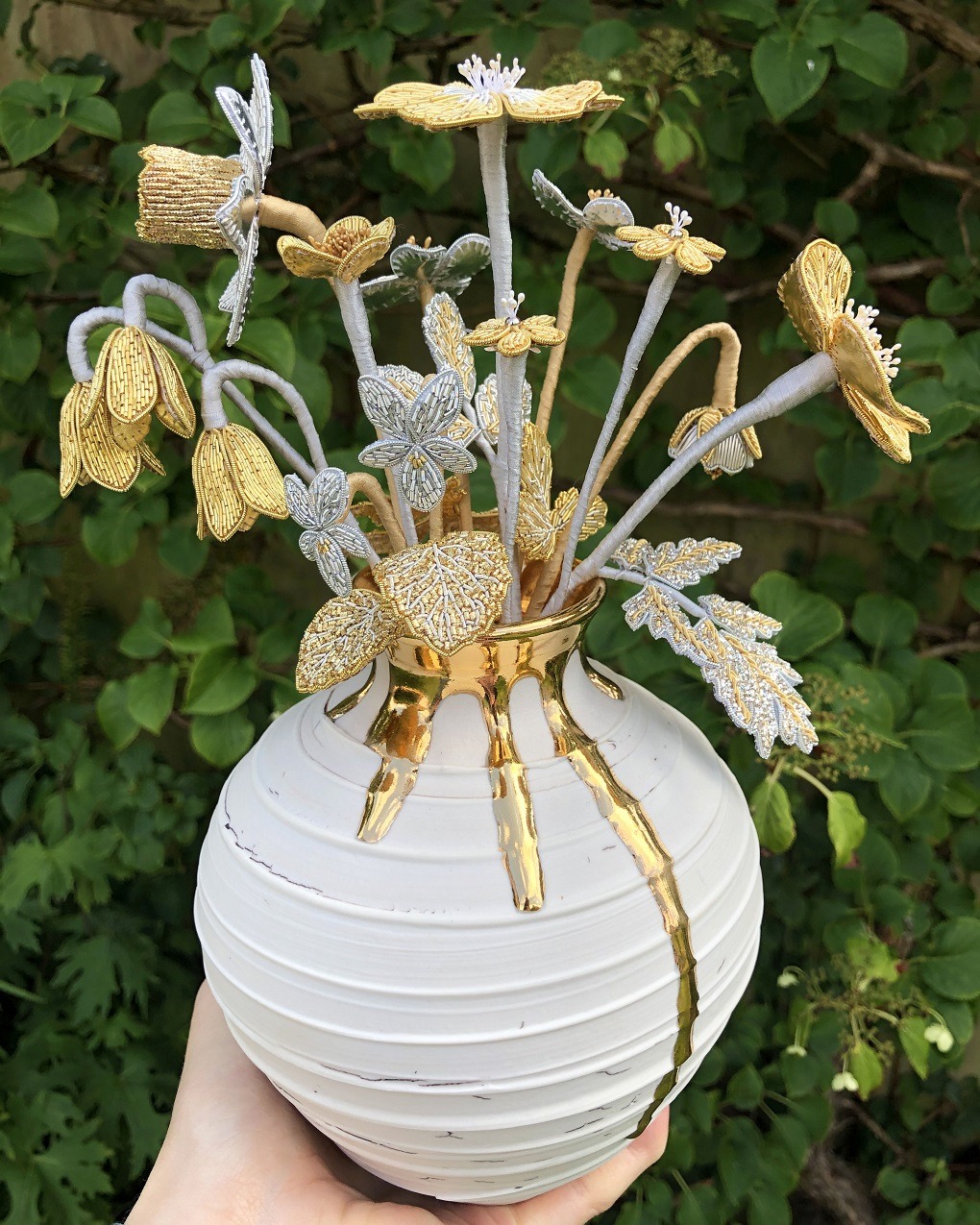
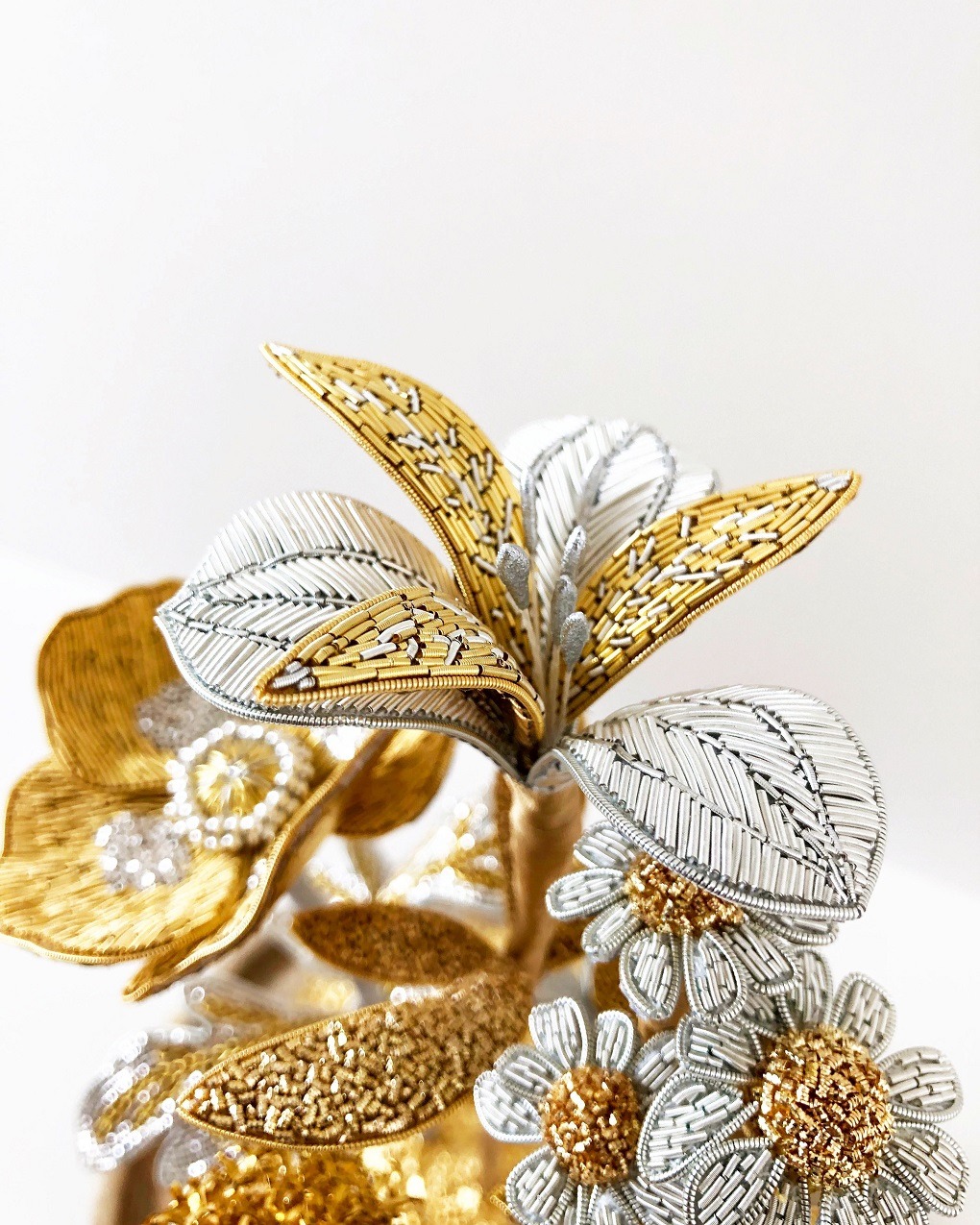
Do you regard your work as traditional or modern?
I would say that my 3D goldwork flowers are more unconventional. Although goldwork is often raised from the fabric, it is usually applied to a flat piece of cloth. By cutting out pieces of goldwork embroidery from the surface material and manipulating them to create sculptural forms, I’m using goldwork in an unusual way.
Working in this way requires different considerations to working a flat embroidery too, such as adapting the way the goldwork wires are applied to the fabric so they don’t become damaged when the petals are bent into their 3D shapes.
Other aspects of my work are more traditional, such as my use of traditional embroidery stitches with pearl cotton thread. But I always aim to give the embroidery a contemporary feel through the style of my designs. Colour selection also plays a part in this – my designs are often quite colourful, which I think helps to keep them contemporary.
Rather than always using a single technique to embroider a whole design, I often combine embroidery techniques within the same design.
For example, I will use a tambour beaded background to offset the goldwork on top. Or I will use beads as well as goldwork wires to fill shapes, which I think creates a texturally interesting embroidery. Whether or not I’m using embroidery techniques in an unconventional or more traditional way, I’m always trying to achieve a high level of technical skill in everything I create.
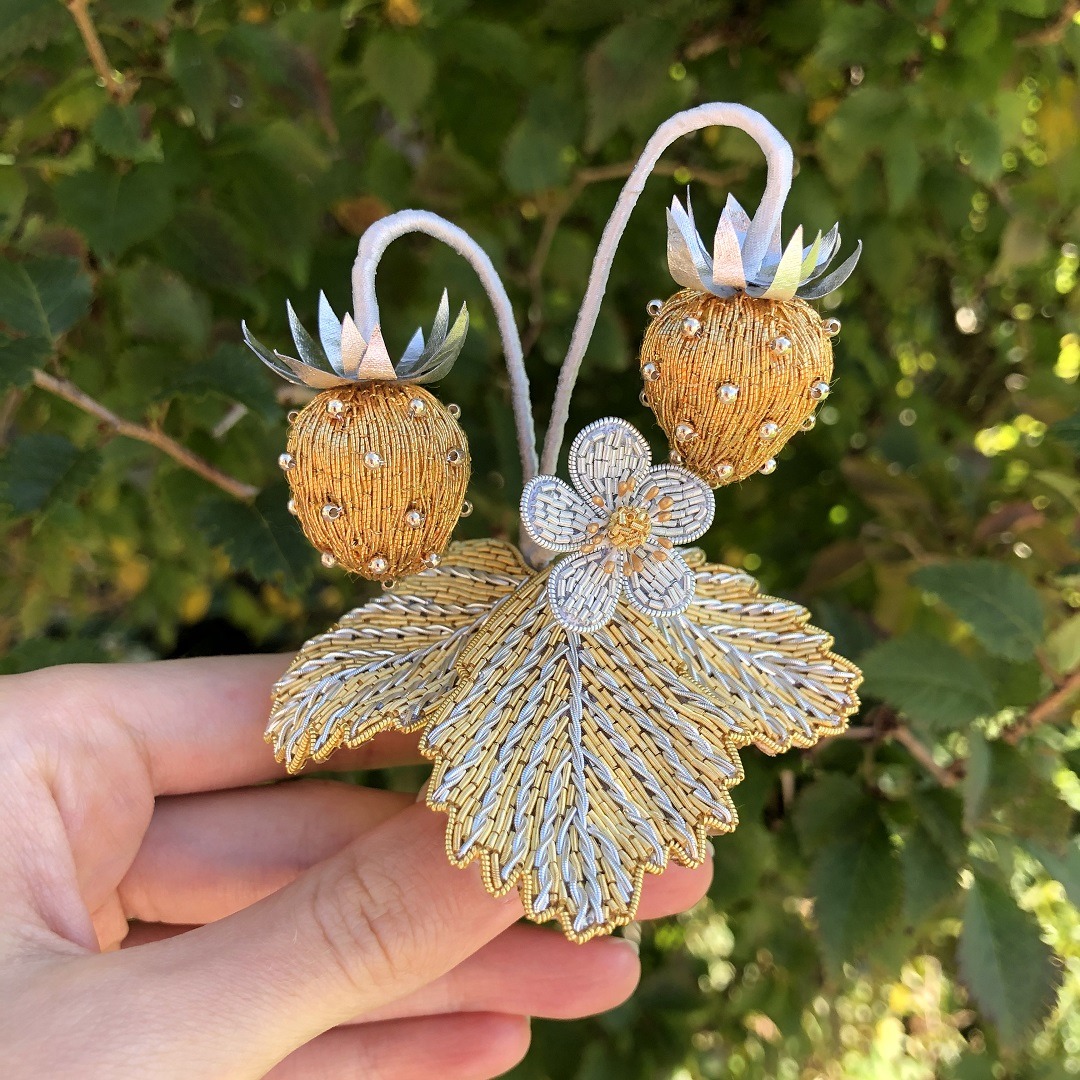
Where do you turn for inspiration?
Most of my inspiration is gathered from my own garden, and gardens I visit. Every year I grow a selection of mostly annual flowers for cutting so that I can have bunches of fresh flowers all summer. It’s another design source for my work.
I spend a few minutes in the garden each day observing the flowers, and I photograph them from different angles as references to draw from. I often spot interesting insects such as beetles, bees and butterflies on the flowers, which also make their way into my designs.
The practicalities
What’s the biggest challenge you face creatively?
Sourcing the perfect materials is quite often challenging, I usually have a specific idea of what I want and sometimes this is hard to match. This is especially difficult when ordering online, as it’s hard to tell the true colour of materials on a screen. I usually have to wait until they arrive and hope I am lucky and have picked the right shade!
Sometimes I’m not able to find the right colour or size of materials anywhere. When designing my sister’s wedding bouquet I wanted to feature metallic sage green details in the flower centres and the petals. This soft green colour was impossible to find in either goldwork wires or round beads in the right size.
To solve this, I decided to buy plain white round beads and sequins and dip these in green metallic paint to give the colour and finish I desired. To mimic goldwork wires I applied clear tube-shaped beads over pieces of soft green fabric – the colour of the fabric showed through the beads to give the impression of them having a green tinge.
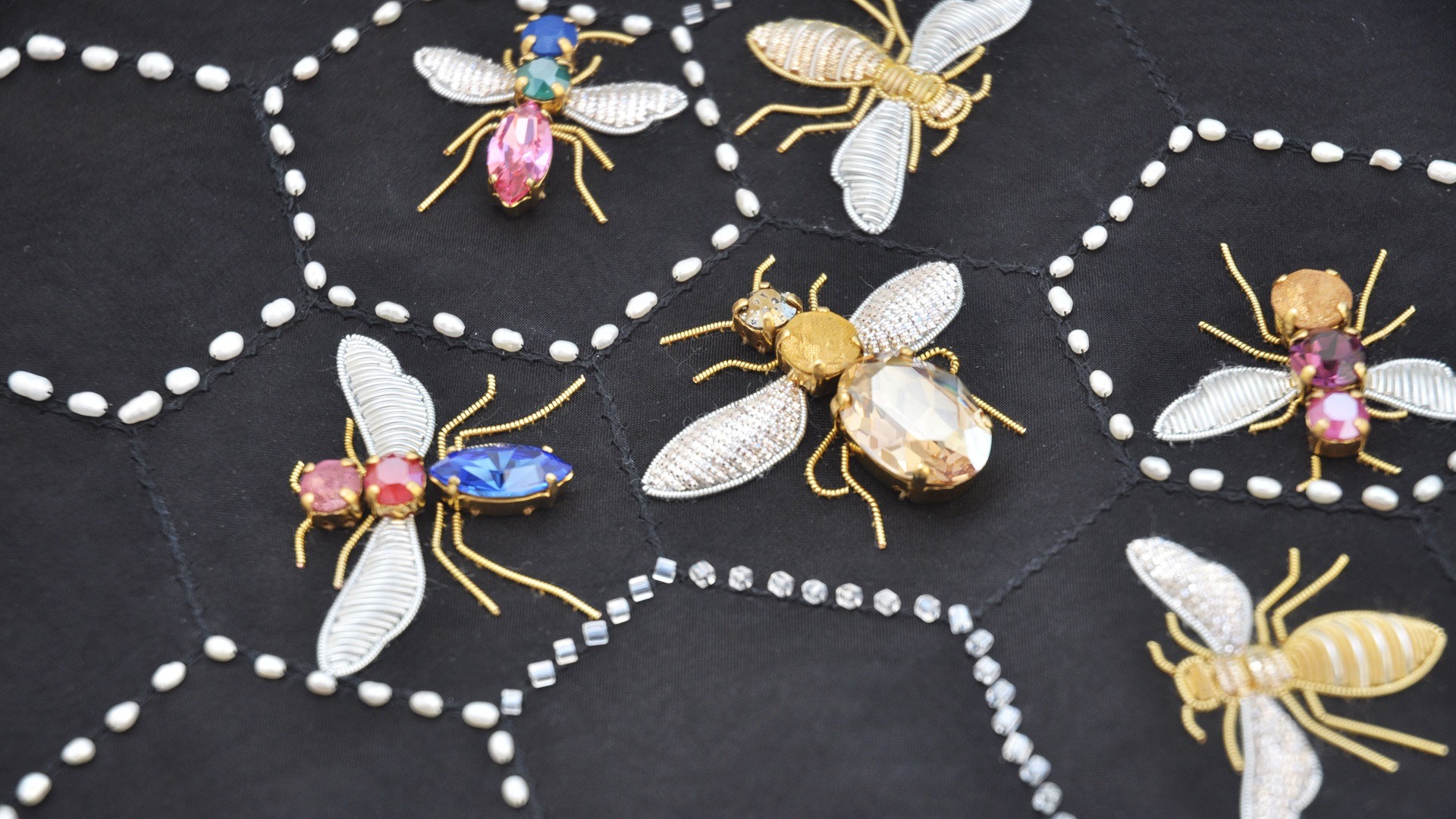
What do you love about hand embroidery?
Hand embroidery is really special because it cannot be truly imitated by machine. You can create intricately detailed and texturally interesting embroidery, which has a unique quality due to it being worked by hand.
I think hand embroidery is such a unique skill. There are so many different techniques you can employ, and the individual techniques can be used in varying ways, which means there really are endless possibilities.
Creating a beautiful embroidery from fabric and thread is so satisfying and I find the physical process of embroidery so meditative and relaxing. It takes time and cannot be rushed; the careful consideration needed to make each stitch means that I can fully immerse myself in the embroidery process.
I also absolutely love teaching hand embroidery. It’s such a pleasure to share my embroidery skills with others and amazing to see the sense of achievement that a student gets when they have a finished creation that they have made completely with their own hands.
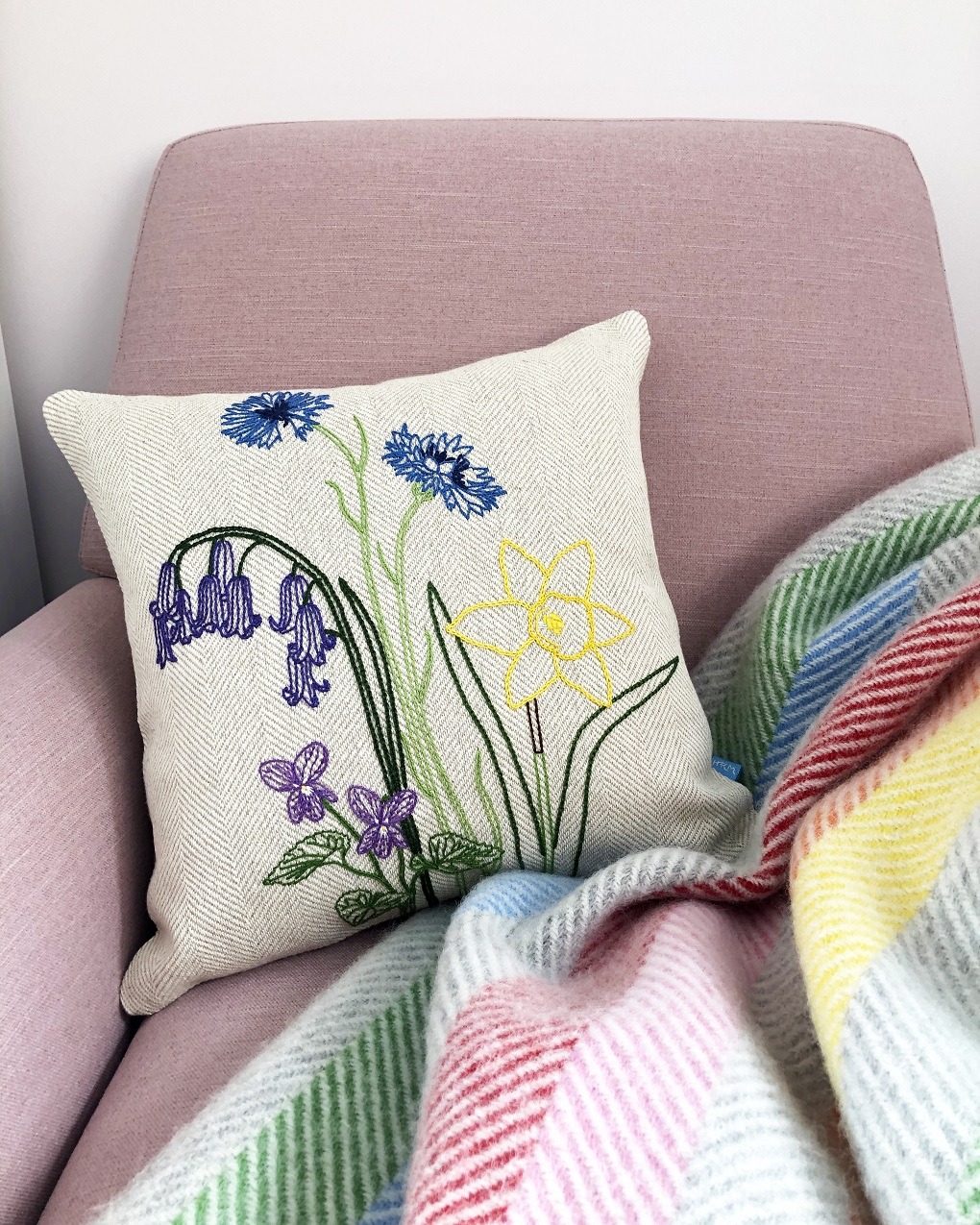
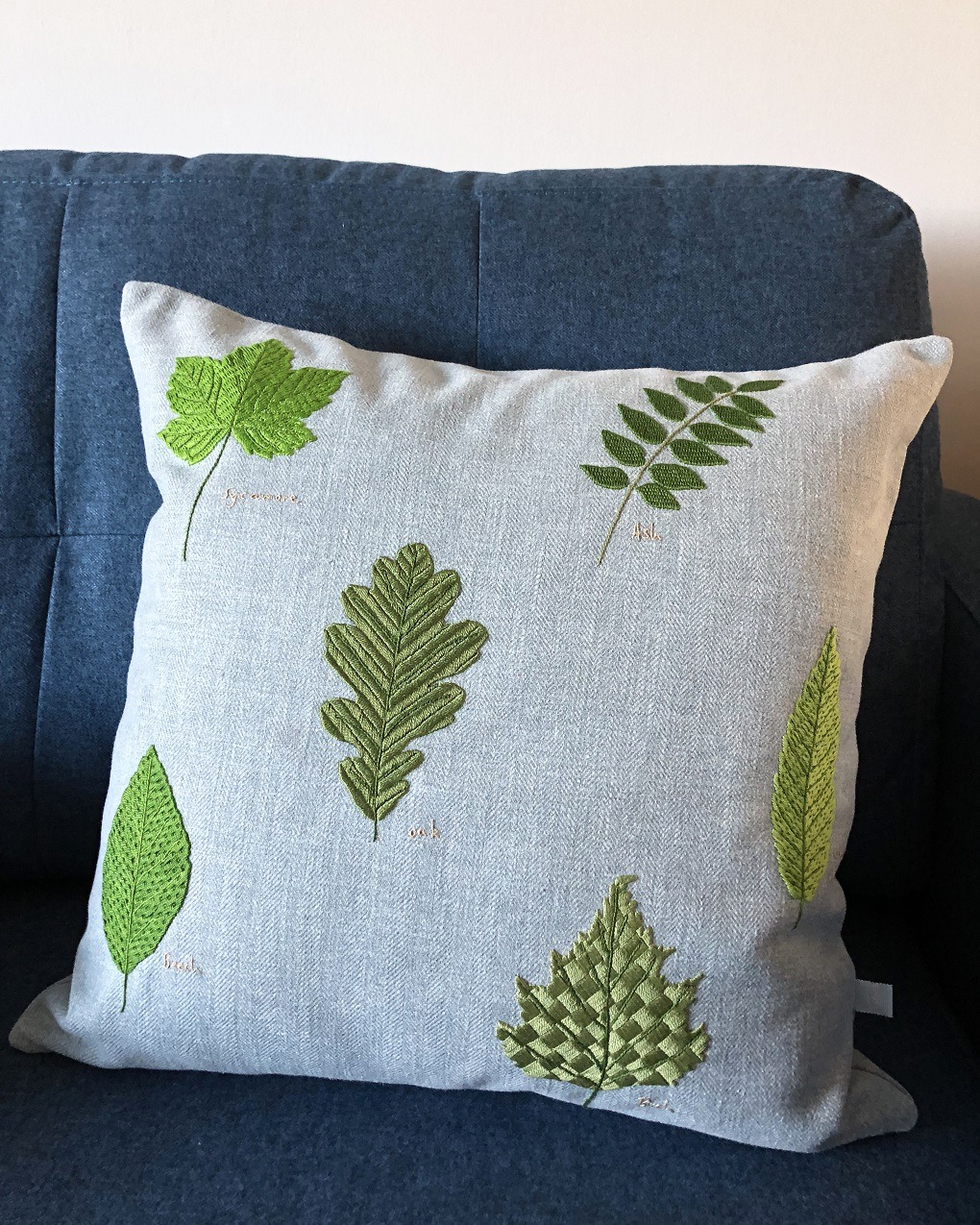
What led you to work for yourself?
I really wanted to have a job focused on creating hand embroidery and I wanted to develop my own range of work rather than always working on other people’s designs. Most of the hand embroidery jobs in the UK are located in London and, not wanting to relocate, it also suited me well to work for myself because I could work from home.
Of the many creative skills you can work in, embroidery is quite an easy one to set up on your own: it isn’t essential for you to have a separate studio space because you don’t need lots of machinery or specialist equipment.
Working for myself has meant that I am able to have control of a project from start to finish. I love the variety of work I get to do, and I never know what exciting projects are going to pop into my inbox.
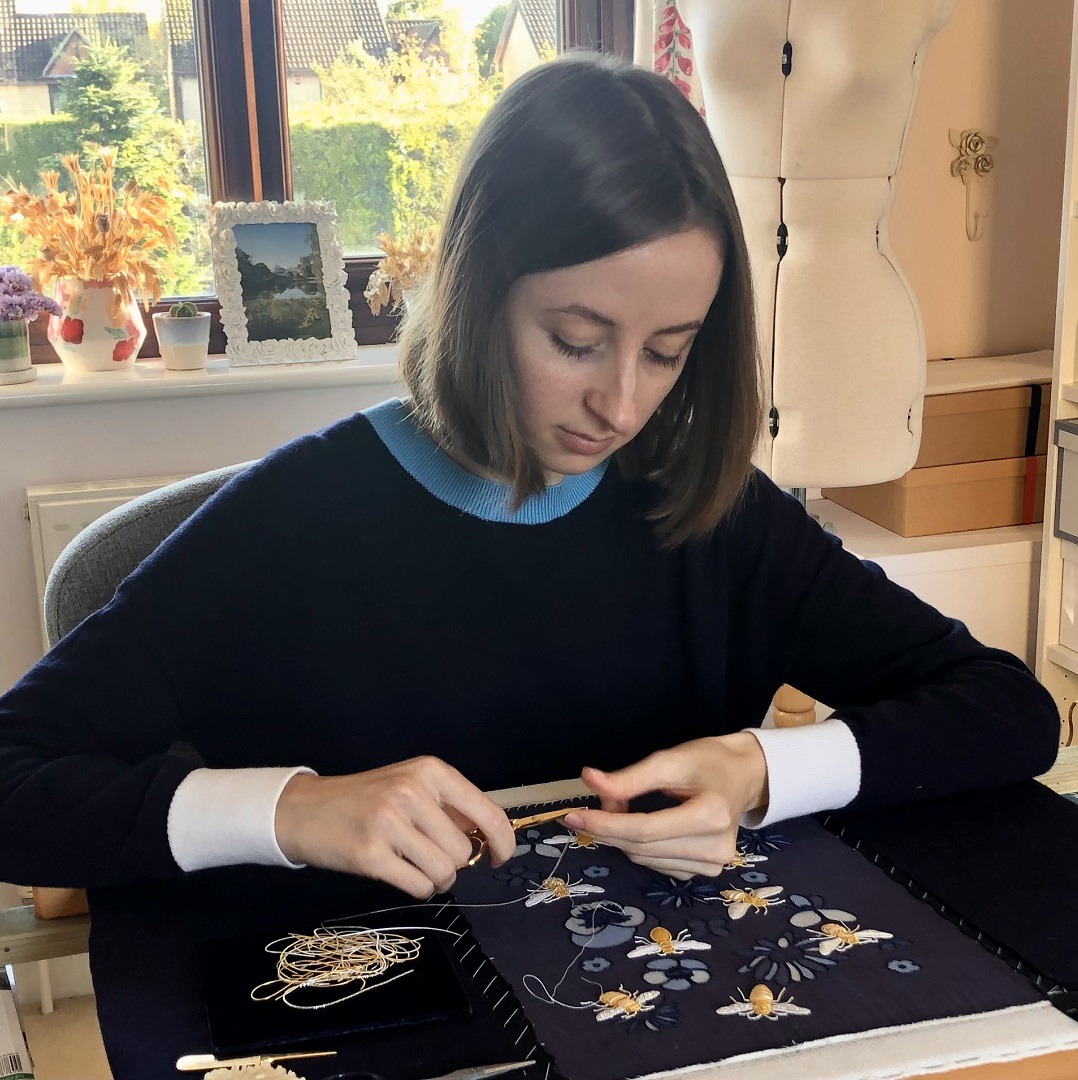
Tell us more about a typical week?
I live and work from my home near Bristol in the UK. I work in my bedroom, which also doubles as my studio. It’s a cosy, colourful space with soft pink walls, floral curtains, filled with bunches of cut and dried flowers throughout the year, as well as books, and my treasured collection of handmade ceramics. I love working in this space, with everything to hand and neatly organised – at least most of the time!
I mostly work from home, and usually arrange each day in a similar way. The natural light in my workspace is normally best in the morning so I always spend this time working on embroidery.
I split the afternoon into two parts: after lunch I’ll reply to emails and then work on any writing, such as information for teaching or instructions if I am making embroidery kits. I might also spend some of this time drawing. Later in the afternoon, I’ll work on the computer creating designs, editing images or updating my website.
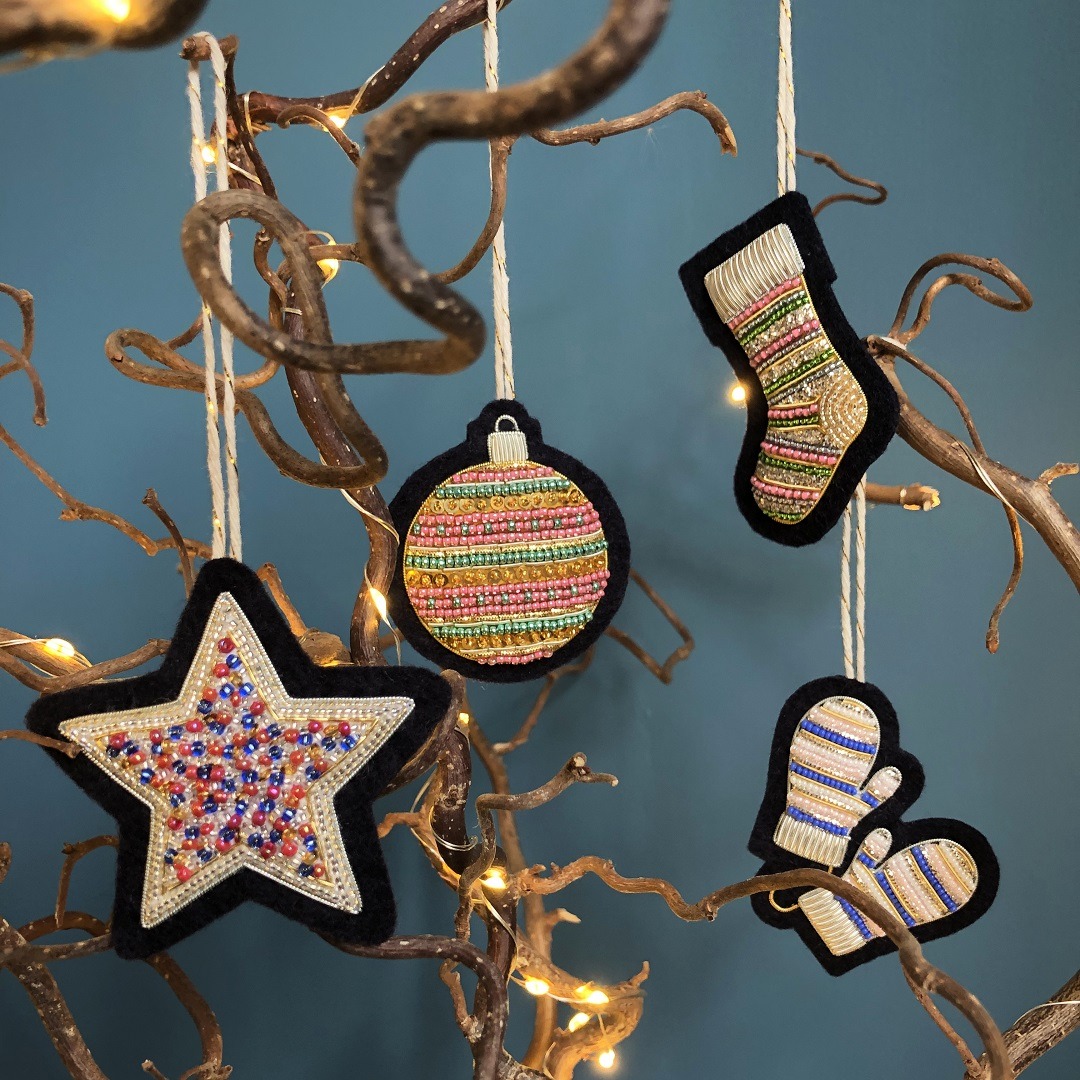
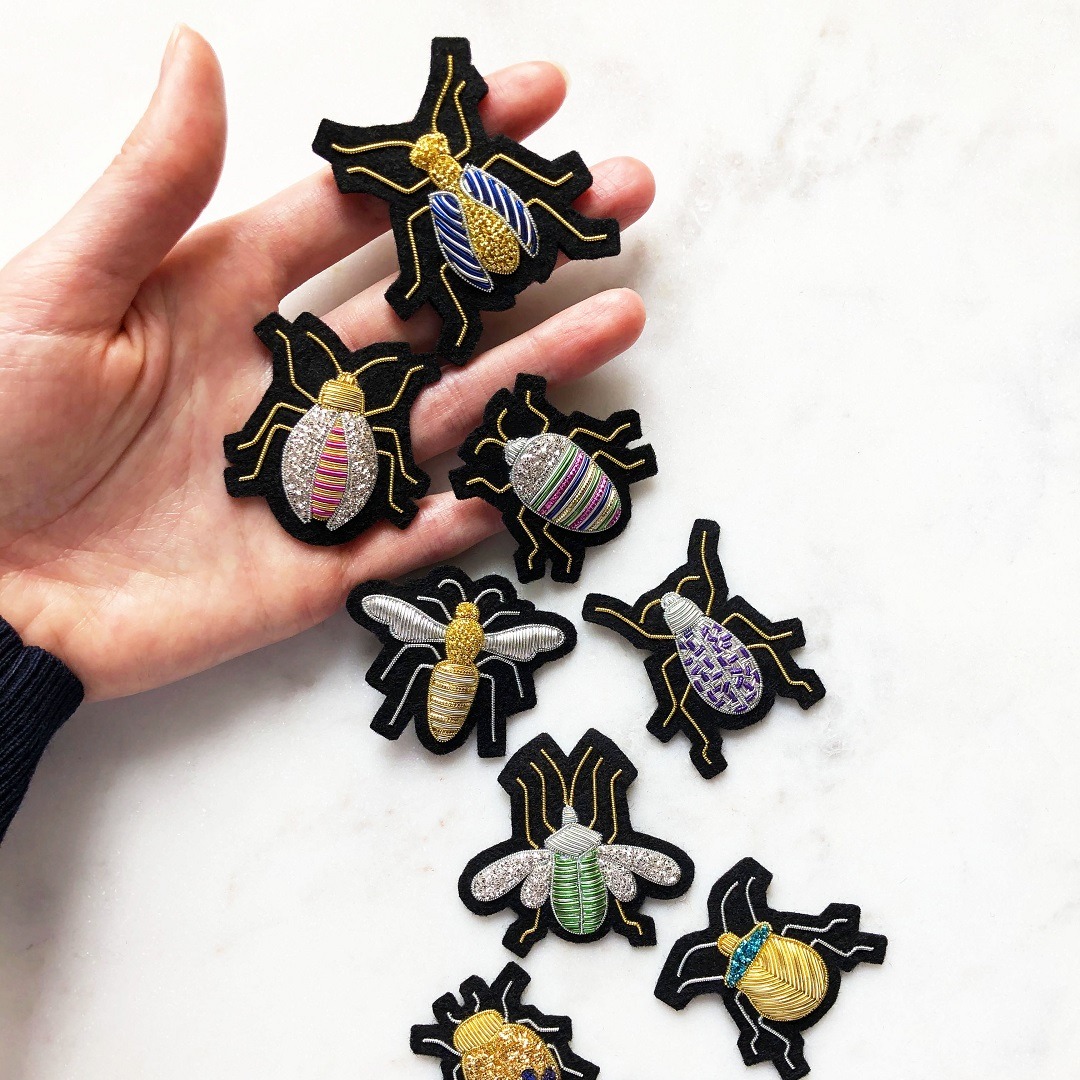
Any advice for those who might feel nervous about tackling traditional techniques?
Goldwork embroidery encompasses many different techniques that can seem overwhelming at first. I’d recommend getting some help from an expert. You can do this by getting yourself a good book: Glorious Goldwork by Sarah Rakestraw and Susan Hinde, or Goldwork Embroidery by Lizzy Pye are both great comprehensive guides to goldwork.
Or take an online or in-person class, which can be a great introduction to goldwork. This will help you to master essential techniques and understand how they can be used in designs. You can then experiment with the techniques and use them to create your own designs.
Don’t be disheartened if your first attempt is not perfect, the likelihood is it won’t be! Every embroidery technique requires plenty of practice so keep persevering until you have mastered the technique. And most importantly, enjoy yourself!
Hannah Mansfield is an embroidery designer based near Bristol, UK. She graduated with a degree in Textile Design in 2016, and founded The Perpetual Maker soon after, and now works to commission, as well as creating her own embroidery designs and kits. She also teaches classes around the UK and online. In 2019, she was awarded First Prize in the Textile Art Open category of the Hand & Lock Prize for Embroidery (UK). Hannah became a Trade Freeman of the Worshipful Company of Gold and Silver Wyre Drawers since 2020.
Website: theperpetualmaker.com
Instagram: @theperpetualmaker
Discover the work of Sue Rangely and Corrinne Young – two artists seduced by nature, who’ve not only made a successful career in textiles, but relish the challenge of taking embroidery into three dimensions!
Traditional or modern? Do you like to stick to the rules, or bend them? Do you like to perfect a technique, or prefer to experiment? Tell us more in the comments below.
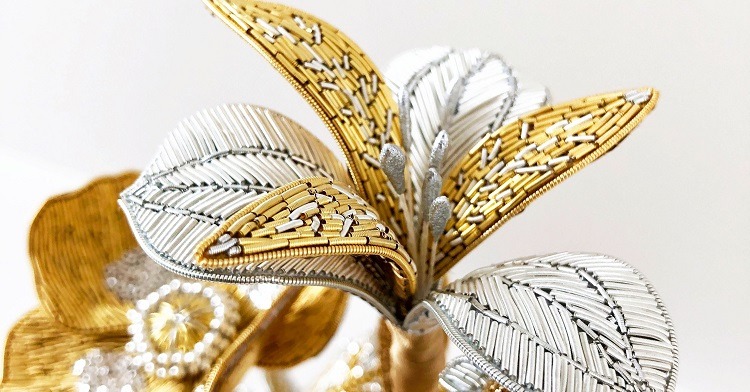

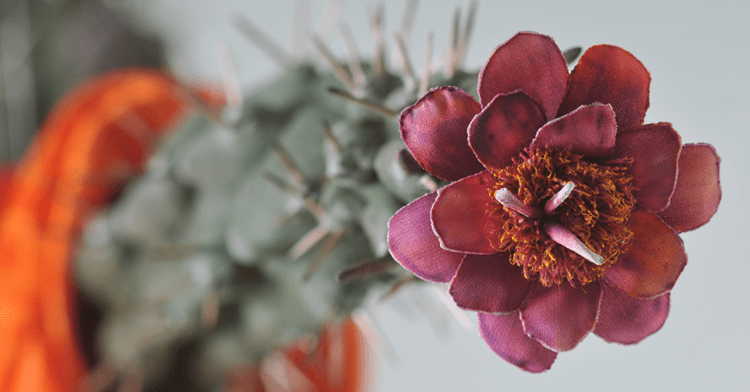
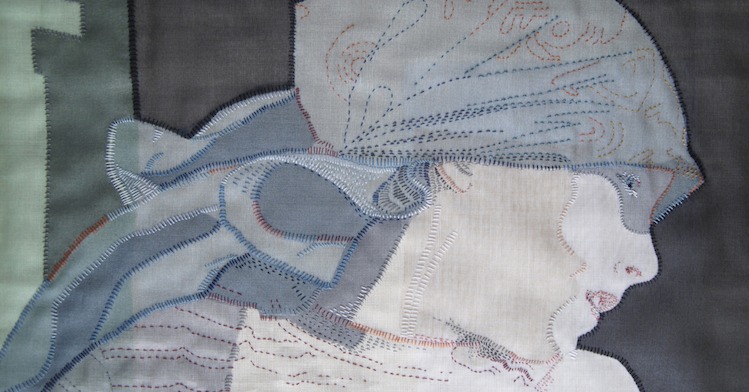

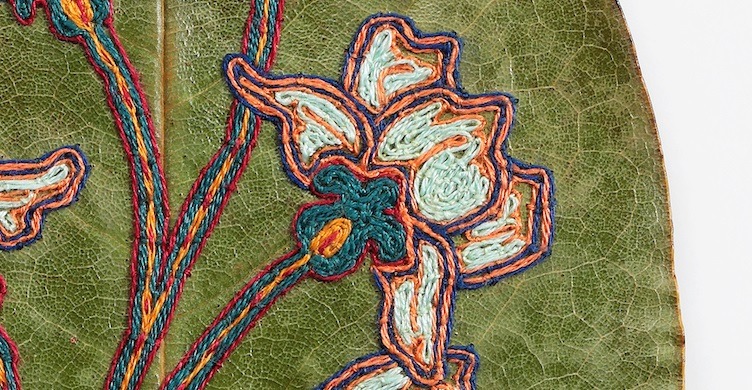
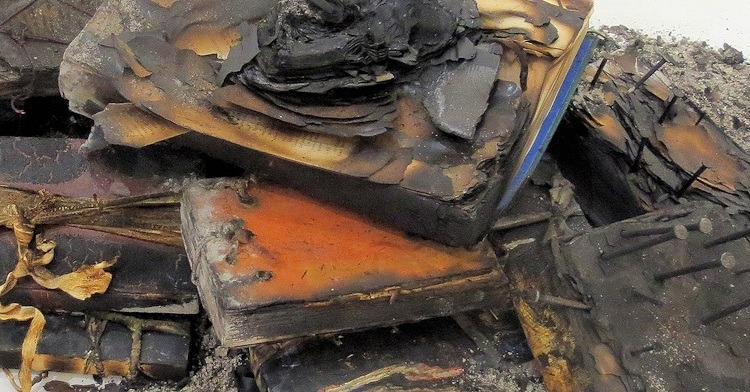
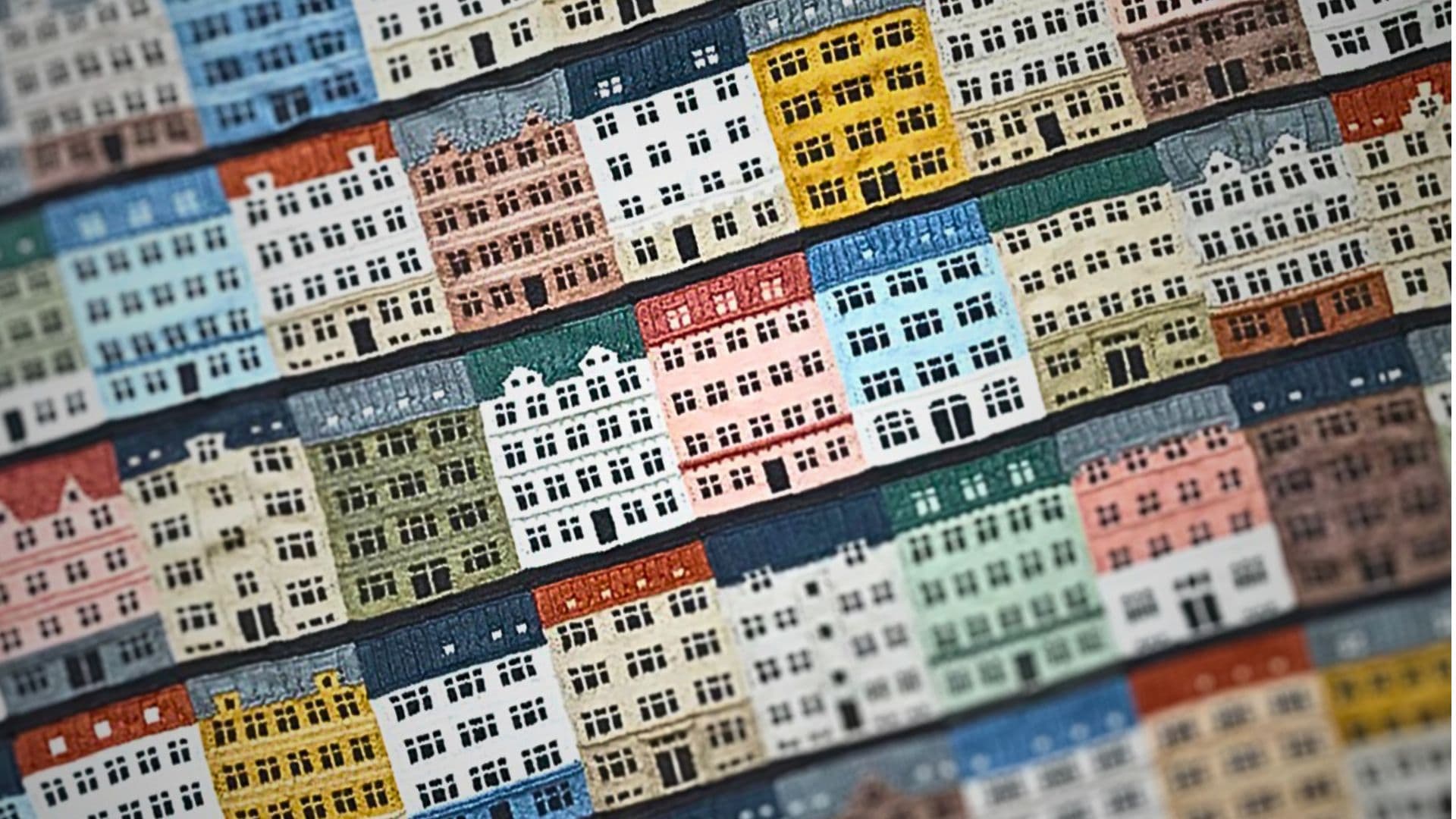
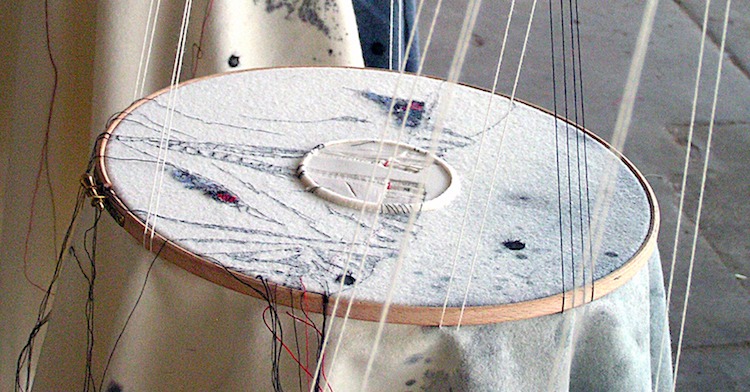
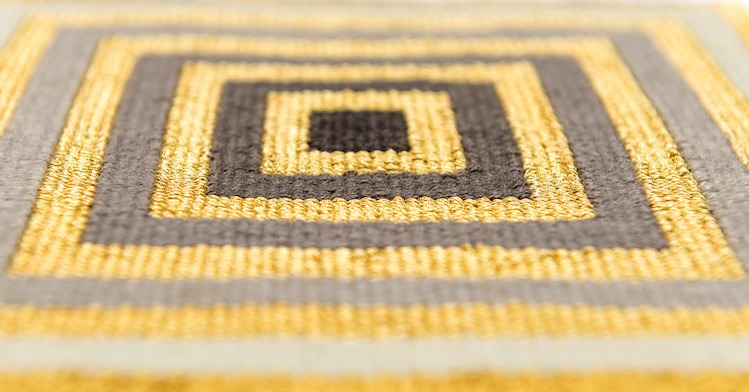
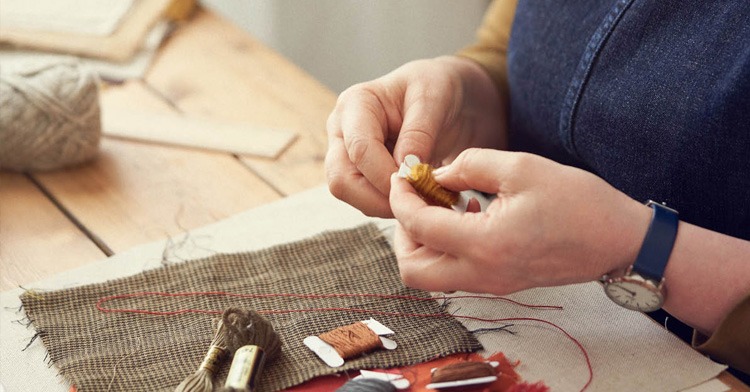
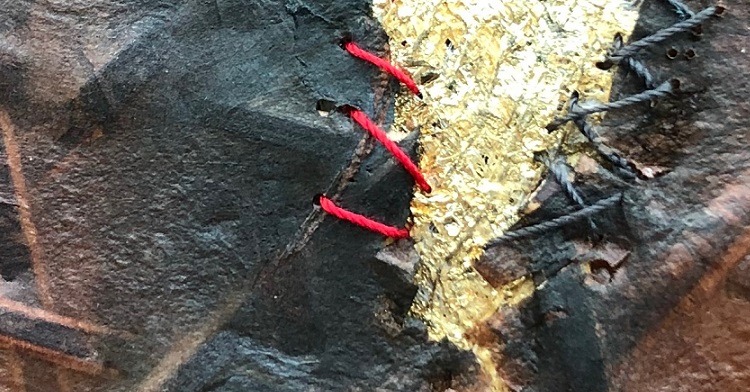
2 comments
Aruna Mahajan
It is an inspiration to read about Hannah Mansfield goldwork. I could so relate to it as i also never sit idle and am always creating with hand. Secondly I also love ro add the oppulence of Gold in my hand embroideries.
Thank you for sharing the details.
Aruna
Hannah Mansfield
Hi Aruna,
I’m so pleased that you enjoyed reading about my embroidery!
Hannah